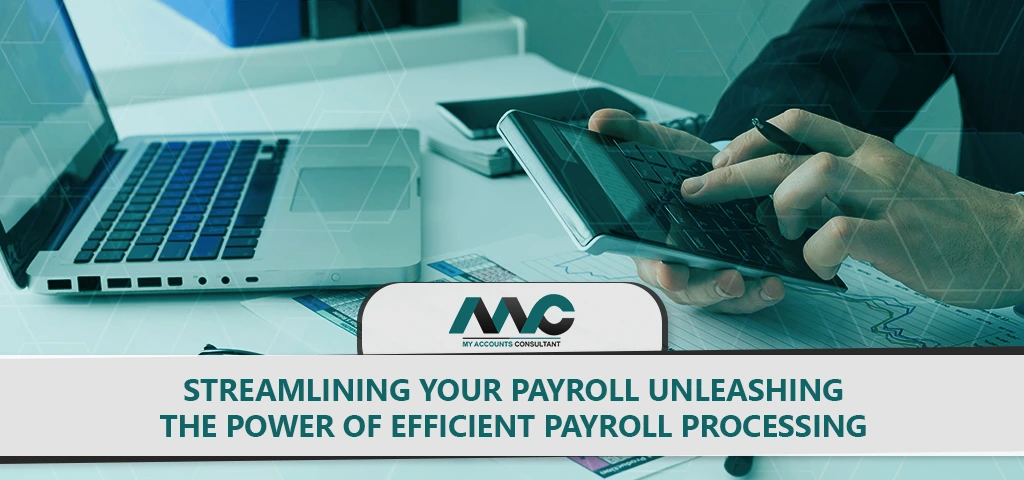Streamlining Your Payroll Unleashing the Power of Efficient Payroll Processing
- Home
- Streamlining Your Payroll Unleashing the Power of Efficient Payroll Processing

Managing payroll is a critical aspect of any business, and doing it efficiently is vital for maintaining employee satisfaction and overall company success. The process of payroll involves calculating employee wages, withholding taxes, and ensuring timely payments. In this, we will explore the benefits of streamlining your payroll system and the key steps to unleash the power of efficient payroll processing.
The Importance of Efficient Payroll Processing
Ensuring Employee Satisfaction
Efficient payroll processing is directly linked to employee satisfaction. Timely and accurate salary payments create a sense of trust and reliability among employees. When employees feel that their hard work is rewarded promptly, they are more likely to remain motivated and engaged in their roles.
Compliance and Legal Obligations
Payroll processing is subject to various legal regulations, including tax laws and labor requirements. Streamlining your payroll system ensures compliance with these regulations, reducing the risk of penalties and legal complications. An efficient payroll process also allows for accurate reporting and easy retrieval of records during audits.
Resource and Time Savings
A well-organized payroll system can save considerable time and resources for businesses. Manual payroll processing can be labor-intensive and prone to errors, leading to potential delays and additional administrative costs. By streamlining the process, businesses can allocate their resources more efficiently and focus on core activities.
Improved Data Accuracy
Automated payroll systems significantly reduce the likelihood of human errors in calculations and data entry. When payroll information is accurate, it enhances the overall financial stability of the company and builds trust with stakeholders, including employees and investors.
Resource and Time Savings
A well-organized payroll system can save considerable time and resources for businesses. Manual payroll processing can be labor-intensive and prone to errors, leading to potential delays and additional administrative costs. By streamlining the process, businesses can allocate their resources more efficiently and focus on core activities.
Key Steps to Streamline Your Payroll Process
1. Invest in Payroll Software
Employing modern payroll software can revolutionize your payroll processing. Look for a user-friendly and feature-rich system that can automate tasks like salary calculations, tax deductions, and leave management. With real-time data accessibility, payroll software facilitates better decision-making.
2. Centralize Employee Information
Maintain a centralized database of employee information to ensure consistency and ease of access. This includes personal details, tax-related information, bank account details, and any changes in employment status. Centralization reduces the risk of redundant data and streamlines the updating process.
3. Embrace Automation
Automating repetitive payroll tasks not only saves time but also minimizes the risk of errors. Set up automatic payroll runs on scheduled dates to ensure timely payments. Automation also allows for the integration of attendance and leave management systems, further streamlining the process.
4. Implement Mobile Accessibility
Incorporate mobile accessibility into your payroll system. With many employees working remotely or on the go, mobile access allows them to view their pay stubs, track leave balances, and access important payroll-related information conveniently.
5. Regularly Audit Payroll Data
Conduct regular audits of your payroll data to identify discrepancies and rectify them promptly. Audits help maintain data accuracy and ensure compliance with legal requirements.
6. Provide Training to Payroll Staff
Invest in training your payroll staff to make the most of the payroll software and stay updated on changing regulations. Well-trained staff can handle exceptions and complex scenarios more effectively, reducing the chances of errors.
7. Stay Informed About Tax Laws
Tax laws and regulations are subject to changes, so it is crucial to stay informed about the latest updates. Partner with tax experts or consultants to ensure your payroll system aligns with the current tax requirements.
8. Offer Employee Self-Service Options
Enable employee self-service options through the payroll system. This empowers employees to view and manage their personal information, tax exemptions, and benefits, reducing the administrative burden on HR and payroll staff.
9. Monitor Key Performance Indicators (KPIs)
Establish and monitor KPIs for your payroll process, such as processing time, error rate, and compliance levels. KPI tracking helps identify areas for improvement and measure the impact of streamlining efforts.
10. Regularly Review and Update the Process
Payroll processing is not a static operation. Regularly review your payroll process and update it as needed to adapt to changing business requirements and technological advancements.
Conclusion
Streamlining your payroll process is essential for maintaining employee satisfaction, complying with legal obligations, and saving valuable time and resources. By investing in modern payroll software, embracing automation, centralizing employee information, and staying informed about tax laws, businesses can unleash the power of efficient payroll processing. Remember to conduct regular audits, provide training to payroll staff, and monitor key performance indicators to continuously improve the process. By implementing these steps, your organization can achieve a streamlined and effective payroll system that positively impacts your business's overall success.
Contact us here for Payroll Services now.

Get Help Fast!
My Accounts Consultant Helps Accounting & Bookkeeping Services help you save money, better understand your business and find the Accounts problems before they hurt you.
